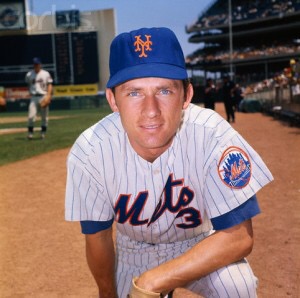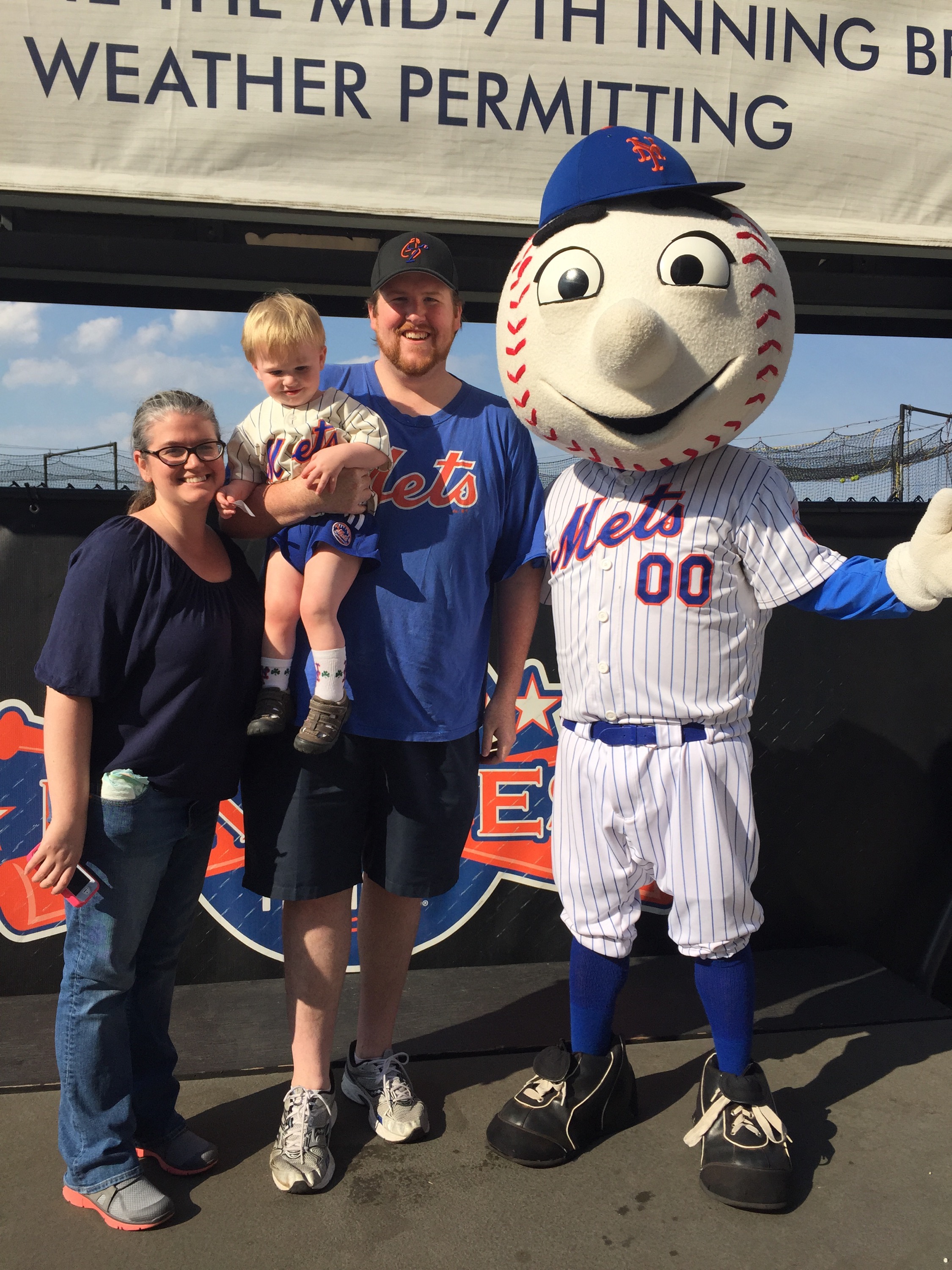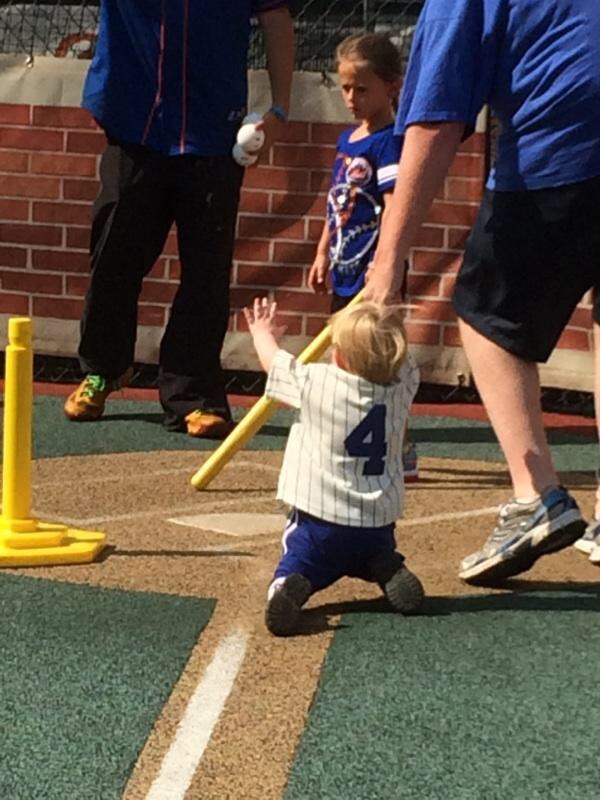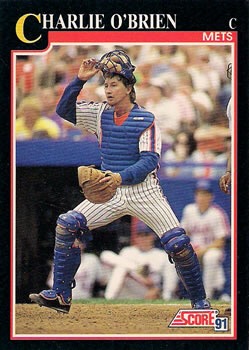Magic Number

With all due respect to Rafael Santana, the only choice for Homefield Magic Number 3 is Bud Harrelson:

He has been involved in more postseason and World Series games than anyone in Mets history. He was the SS on the 1969 Miracle Mets and the 1973 Mets. He was the third base coach for the 1986 World Series winning team, and the 1988 team. He was the inaugural member of the Mets Hall of Fame.
He’s the biggest winner the Mets have ever known. He’s one of the few who had two Mets World Series rings. He was never one to back down. He embodies the spirit these Mets will need in order to win the World Series this year.
Hopefully, the Mets on this team will win multiple World Series like Harrelson did.

Now, I’m on the record as not thinking Homefield is an advantage to the Mets. Overall, I think the Mets may be better served by stating the NLDS in Los Angeles. However, I am excited to see the Mets go for it.
Also, I have to admit I am excited at the idea of seeing Citi Field rocking for its first playoff game. Also, I had a lot of fun doing the Magic Number countdown for the divisional title. Unlike the last time, I am not focusing on the bad players on bad years. Mets fans are celebrating.
Instead, I’m focusing on Mets who have won the World Series because that’s the goal. I can’t truly focus on players I’ve seen because I wasn’t born in 1969, and I was too young to completely remember 1986.
Normally, the magic number is calculated by determining the point in which a team obtains its goal outright. Because the Mets win the season series against the Dodgers, the Mets only need to have the same exact record as the Dodgers.
Homefield Magic Number: 5

Today is a day to celebrate because THE METS ARE GOING TO THE PLAYOFFS! Today, the ride is complete. We’ve reviewed the bad years and players, and we’ve seen how good we have it now. However, there’s been one fan who’s been there from the beginning, who can really enjoy this. That’s Magic Number 00 Mr. Met:
He was there for the Can’t Anybody Play This Game 1962 Mets. He was there for the 1992 Worst Team Money Can Buy Mets. He was there for the 1998, 2007, and 2008 collapses. He’s seen the worst.
He’s also seen the best. He’s seen the 1969 Miracle Mets. The 1973 Ya Gotta Believe Mets, and the 1986 Amazin’ Mets. He’s seen the Mike Piazza 9/11 homerun and the Endy Chavez catch.
He’s going to be there with us as we see how this improbable season unfolds. I’ve enjoyed the ride and I don’t want it to stop.
LETS GO METS!

In 1991, the Mets streak of finishing second or better in the NL East came to an end. The Mets had a 77-84 record, good for second to last in the division.
Part of the problem was the Mets had a hard time retooling. Davey Johnson gave way to Bud Harrelson. Frank Cashen gave way to Jerry Hunsicker. Darryl Strawberry gave way to Vince Coleman. Gary Carter initially gave way to Mackey Sasser, who was terrific until he came down with Steve Blass Disease. The Mets knew they needed another catcher, so they traded for Magic Man Number 5 Charlie O’Brien:
O’Brien was meant to be that classic backup catcher who was terrific defensively. That was his reputation. However, he couldn’t play everyday because he was terrible offensively. In 1991, his first full year with the Mets (only year he wore 5 with the team), he hit .185/.272/.256. For his Mets career, he would hit .212/.289/.309. While with the Mets, he would only play in losing teams.
Really, his only claim to fame was his hockey style catcher’s mask, which he wouldn’t wear in a game until he was long gone from the Mets. Ultimately, he would serve as a mentor to the young Todd Hundley, but that would not be for a few more years.
Charlie O’Brien reminds me of earlier this year when the Mets couldn’t generate any offense. He reminds me of a time when the Mets were trending downward as opposed to being on the verge of something potentially great. He reminds me that older players can effectively mentor younger players to help them be the best players they can be.
Charlie O’Brien may have been on a Mets team that was heading in a different direction, but he exhibited some of the virtues that have helped make this Mets team great. So with that, let’s tip our caps to Magic Man Number 5 Charlie O’Brien.

Previously, I had done multiple posts for 10 when there was no change in the magic number. When I looked over the candidates again, I didn’t believe there was another player worthy of a write-up. Instead, I thought that I should have a master list of every selection I have made.
Before, I list them out, please keep in mind the rules: (1) I’m focusing on bad, disappointing, or players that haven’t panned out; (2) I must’ve seen the player play; and (3) the player played on bad or disappointing Mets teams. I began the list with 17, and I do not publish anything until the Mets and Nationals have finished their games (if they both played on the same day).
Without further ado, here’s the master list:
Current Magic Number: 0
METS CLINCHED THE NL EAST!
Magic Number 0 – Mr. Met
Magic Number 1 – Chris Young
Magic Number 3 – Omar Quintanilla
Magic Number 4 – IV*
Magic Number 5 – Charlie O’Brien
Magic Number 6 – Kelly Shoppach
Magic Number 7 – D.J. Dozier
Magic Number 8 – Carlos Baerga
Magic Number 9 – Craig Brazell
Magic Number 10 – Joe Hieptas & Rey Sanchez
Magic Number 11 – Vince Coleman
Magic Number 12 – Alvaro Espinoza
Magic Number 14 – Ken Boyer
Magic Number 16 – Rick Ankiel
Magic Number 17 – Jeff McKnight
As the Mets have won the NL East, this series has come to a close. I’ve had a lot of fun doing it, and I hope you’ve had fun reading it. It’s now off to the playoffs.
Lets Go Mets!

I’ve alluded to who my selection for number 8 would be. After looking over the candidates and my self-imposed rules, the pick is Carlos Baerga:

When the trade was made in 2006, Baerga switched to number 8 for the 1997 and 1998 seasons. We all know by now it was an awful trade. Baerga provided the Mets with a triple slash line of .267/.302/.373 with 18 homers and 116 RBIs.
The man he replaced, Jeff Kent, turned out to be a career .290/.356/.500 hitter with 377 homeruns and 1,518 RBIs. He was the 2000 NL MVP. He is the all time leader for second baseman in homeruns (351), RBIs (1,389), slugging percentage (.509), and doubles (560). I remember my Dad was angry when the trade first took place, and he would become more irritated each and every passing year.
Now, record wise, 1997 and 1998 were pretty good. However, 1998 was heartbreaking. For all the fans looking for a repeat of 2007 and 2008 after a couple of losses to the Marlins, they forgot about the original collapse.
The Mets had a one game lead over the Cubs and four games over the Giants with five games remaining (seven for the Giants). The Mets lost all five of their remaining games. They were home as the Cubs and Giants had a play-in game for the Wild Card featuring future Met Steve Trachsel, and former Met, Jeff Kent.
In those final five games for the Mets, Baerga went 2-13 (.154) with no walks, one RBI, no extra base hits, and one game on the bench. He wasn’t the only one responsible for that collapse, *cough* Mel Rojas *cough*. However, the Mets were stuck with Baerga while Kent was in the play-in game. It just shows you how changing one player for another can have a profound impact on your season. With this year’s flurry of trades, it’s something Mets fans know well.
So let’s tip our cap to Magic Number 8, Carlos Baerga, who shows us, in part, our fears of collapse are behind us.
Also, take this time to remember the late, great Gary Carter. Je me souviens. Rest in peace.

After the Marlins beat the Nationals last night, the Mets magic number is finally in single digits. At a minimum, I thought it was nice to be off of 10. However, I saw the choices for 9, and I quickly realized it was going to be difficult to find a player that fits within my parameters.
Many of the players either played well or were on good teams. Many of the players played before I was born. However, I knew there was a player out there. I trusted that I could find someone who wasn’t that good and played on a bad Mets team. I then found my man Craig Brazell:

If you don’t remember him, it’s probably because he only played 24 games with the 2004 Mets, who went 71-91. In these 24 games, he would hit .265/.286/.412. He wouldn’t play in the majors for another three years when he would play five games for the Royals.
It’s a shame because he was an actual major league prospect. He was a Top 10 organizational player seen to have good power and a good glove at firstbase. Unfortunately for him, he was blocked by the Mike Piazza firstbase experiment. The next season, he was blocked by Doug Mientkiewicz (because Carlos Delgado wouldn’t sign with the Mets). After 2005, he was granted free agency, and he left Mets organization.
In some ways, Brazell reminds me of Ike Davis in that they were both good fielding first base prospects with power (Davis was a much better prospect). Unfortunately, neither panned out even if Davis had some early success. However, unlike with Brazell, the Mets had a viable option in their system with Lucas Duda.
That’s what this season has taught us. You need organizational depth. You need it not just to get the players you need at the trade deadline, but also to fill-in spots for your team when there is injury or ineffectiveness. It’s unfortunate when the prospects work out. It’s devastating when there’s no viable alternatives at the ready.
So with that, let’s offer a hat tip to our magic man number nine, Craig Brazell.

So there was no movement in the magic number for the second straight day. While I’m enjoying the series, but I’m not ready to move on to Shingo Takatsu as of yet, especially with the potential that the number may hold until Friday night.
I could discuss the managers who have worn the number, but that would limit me to Terry Collins and Jeff Torborg. With respect to Collins, I’ve written a lot about him, so I wouldn’t be breaking any new ground. With Torborg, his teams were terrible, but it’s not like his firing was a positive. If you don’t believe me, go ask Generation K.
The reason I’m moving on is because:
https://twitter.com/bbtn/status/644363763299303424
No, it’s not seven with 17 remaining, but it could be with a Nationals win tomorrow. There are enough Mets fans needlessly panicking that this is the 2007 season all over again. I guess a loss to the Marlins can do that, especially two straight losses. As a symbolic gesture, I’m not picking another 10 as I think it’s time to move on. Not just from the Takatsu’s of the world, but from the concept of another collapse.
This is not the same team. This is a different season. I’ve been just as harmed as the next Mets fan by that season, but I don’t see the need to make it my focus. I’m more concerned about the playoff roster. You should be as well. I’m more concerned as to pick for the remaining magic numbers as I’m confident the Mets will get it done.
With that said, I’m moving on. I hope you will too.

With the Mets losing and the Nationals winning, there is no change in the Mets magic number. However, I’ve been having some fun doing these, so I figured I would take another crack at 10. Today, I’m looking at the 2004 season and Joe Hieptas:
During the Mets 2004 season, when they finished 71-91, they would call up Hieptas in September to become the Mets third string catcher. On October 3, 2004, his dreams would come true, and he would play in a big league game catching one inning in an 8-1 win over the Montreal Expos. Unfortunately, Hieptas did not get a chance to bat making him a modern day Moonlight Graham.
Hieptas tried all he could to get back to the majors. He would convert to a pitcher at the Mets suggestion in 2007, but he would never make it back to the big leagues. Much like the 2004 Mets, he never really had a chance, but he still went out there anyway. I know at times it must be frustrating for him, but he can sleep at night knowing he gave it his all.
Hieptas’ story reminded me of Mets fans’ favorite punching bag, Eric Campbell. I’ve seen a number of things written about him. I believe most of it is unfair and sometimes just wrong.
He’s a guy who plays hard and hits the ball hard. He’s doing everything he can do to be a big leaguer. It’s just ironic that Campbell sees his salvation in a position Hieptas had to leave to get another shot. Hieptas and Campbell are both reminders that whether a team is good or bad, there is always someone out there trying to make the most of their talent and opportunity.
So with that lets tip our hats to Joe Hieptas.



